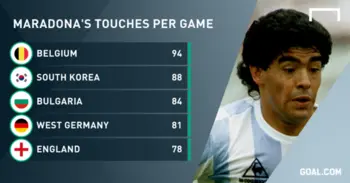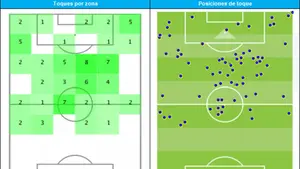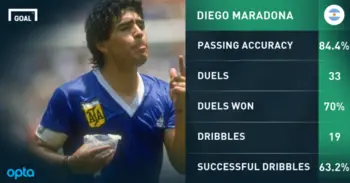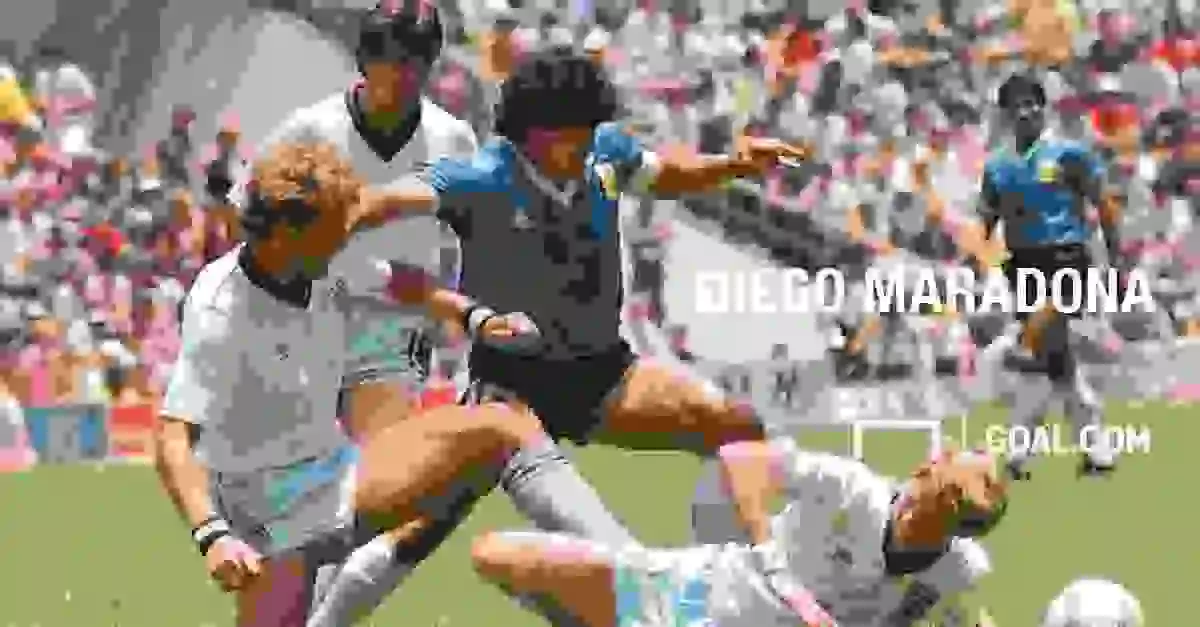It was not a coincidence. It had nothing to do with a moment of inspiration, nor a lucky break. It was not a stroke of brilliance, nor a comedy of errors from the opposition. Diego Maradona's second goal against England on June 22, 1986, was the logical next step from a player who was set on doing something no other player had achieved: utter perfection.
His first goal, named for the ages thanks to his protestations after the match that it was "a little the head of Diego, a little the hand of God", infuriated those England players who had witnessed the strike up close. The second stunned them, and anyone watching.
Maradona played a perfect game in Argentina's famous (and infamous) 2-1 win, to send the Albiceleste through from the quarter-finals in the 1986 World Cup. The 114,000 people present in Mexico City's Estadio Azteca watched a man who had deleted the word 'impossible' from the dictionary.
Millions more watched on television, and would do in countless replays over the years. Beardsley, Hodge, Reid, Butcher, Fenwick, Shilton; all were left flailing on the little genius' way to goal. The entire England team was left behind, to be more specific, as the Argentina captain's mazy dribble was only a single part of a masterpiece of the likes that would never be seen again.

Against Bobby Robson's team, Maradona planned to take everything he had been doing in the build-up to the quarter - against South Korea, Italy, Bulgaria and Uruguay - to the next level. The key was to do something different every time he touched the ball. In the last-eight the skipper showed an unnatural hunger for possession. Every time he had the ball at his feet he went on the attack, skipping past opponents and moving mountains to make it to Peter Shilton's net.
Opta's statistics show he tried 19 dribbles; to put that in context, the next most-daring member of the Albiceleste squad, Hector Enrique, trailed with a mere four.
The No. 10 in Carlos Bilardo's team thrived under the freedom the coach knew he had to be given. He also led the team in shots on goal, with seven (three on target). He was the man most involved in play, touching the ball no less than 78 times. But he was far from selfish, a man on a solo mission - he laid on five scoring chances for his team-mates and three crosses.

With 30 minutes played in the first half, Maradona took the ball close to the centre circle. He lifted his head slightly, and was on the move. With the ball glued to his left foot and an unworldly change of pace he set off for the area, leaving Kenny Sansom no choice but to take him down. The passage of play reveals one obvious affirmation, and another secret.
What was clear for all to see was that Maradona was playing in the form of his life. Nobody could stop him. What was not so clear was the fact that his team-mates too knew exactly what was happening. When he took the ball Jorge Burruchaga cut across him and drew a marker away. Jorge Valdano, his attacking colleague, hared away down the left to give him another passing option, if needed. They understood how to play alongside the wizard of 1986.

The only coincidence in the quarter was that Maradona only scored one goal of the quality of that second strike. Against Belgium as well he had two chances that were up there with the Goal of the Century, while 35 minutes into the first half in Mexico City he dribbled past two English defenders, bamboozled Glenn Hoddle and smashed his shot just wide.
In the second 45 minutes, just after England had pulled one back, he pushed forward and squared up once more to the Three Lions. An exquisite double exchange with Carlos Tapia left the forward clear, only for the post to deny him.

Every time he took control of the ball, he had a dizzying effect on his markers. Maradona was convinced in that game he was a cut above the rest, and he set about showing it. He hit with his instep, the outside of the boot, the inside, he took the ball down with his chest, he tried back-heels, he tried his luck from deep. If the first goal was pure deception and cheek to deny his infraction, the second was a rare display of genius and artistry in the sporting arena.
With just three minutes left on the clock, England finally make a breakthrough against the Napoli star. Maradona slowed down on the counter, and for once lost the ball - Steve Hodge was there to tackle from behind. After that shock the No. 10 started to hold the ball up whenever he could. He floated out to the wings, played off England legs for throw-ins and took a few more hits for his troubles.
And although England did not put too much pressure in their efforts to equalise, Argentina, who started to waste time with some theatrical movements, saw out the remaining seconds to make it to the semi-finals.
The second goal of the match, Maradona's Goal of the Century, should have been expected by anyone paying attention to the World Cup. It was a logical conclusion to everything the player and his team had been working towards, and Diego never liked to leave much doubt in anything he set his mind too. He was not content with mere being the genius behind one of the most difficult, beautiful and important moments in Argentine football history: he wanted to change the world of football forever.

- Goal